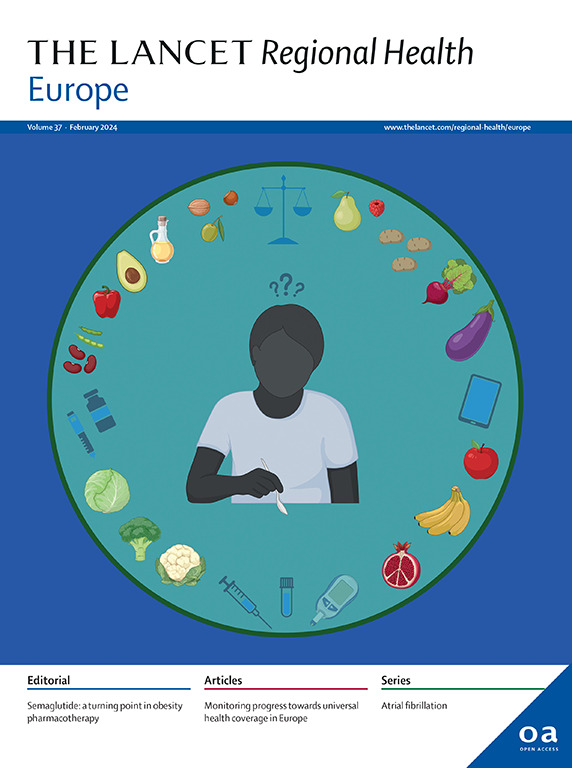乳腺癌患者新辅助治疗期间肿瘤Ki-67动态的预后意义:一项基于人群的队列研究
IF 13
Q1 HEALTH CARE SCIENCES & SERVICES
引用次数: 0
摘要
虽然Ki-67是乳腺癌(BC)中常用的增殖标志物,但其在新辅助化疗(NACT)后的预后价值尚不清楚。本研究旨在探讨NACT期间Ki-67动态的预后意义。方法通过国家乳腺癌登记处(NBCR)确定2007-2020年接受NACT治疗的浸润性BC患者。研究了Ki-67动态与生存结果之间的关系(基于样条的Cox回归)。研究了Ki-67在Neo-Bioscore模型中的预后价值,并探讨了Ki-67相对变化的最佳临界值((nact - pre-NACT Ki-67后)/ nact前Ki-67)(最小p值法)。在2494例患者中,nact前Ki-67的中位数为40% (IQR: 28-65%)。残留病变患者(n = 1826) nact后Ki-67的中位值为12% (IQR: 5-35%)。在整个队列中,较低的nact后Ki-67与较好的乳腺癌特异性生存率(BCSS)相关(p < 0.0001),在ER+/HER2−(p = 0.0001)和TNBC (p = 0.0007),但在HER2+ BC中无相关(p = 0.8223)。nact后Ki-67改善了Neo-Bioscore预后模型,将c指数从0.758提高到0.802。nact后Ki-67、Ki-67的绝对和相对变化具有很强的相关性,是长期预后的预后指标。Ki-67确定的ER+/HER2 - BC和TNBC预后亚组相对变化的最佳临界值(n = 730, p < 0.0001)。结果在221例TNBC患者的外部队列中得到验证(p = 0.00073)。值得注意的是,NACT后Ki-67降低至少48%的低风险残留疾病患者的生存期与病理完全缓解(pCR)患者相当(p = 0.13)。Ki-67的相对变化是患者危险分层的独立预后指标。在探索新辅助治疗策略时,残留疾病中的Ki-67值得进一步研究。FundingCancerfonden, vetenskapsratdet, Cancerföreningen在斯德哥尔摩和斯德哥尔摩地区。本文章由计算机程序翻译,如有差异,请以英文原文为准。
Prognostic significance of tumour Ki-67 dynamics during neoadjuvant treatment in patients with breast cancer: a population-based cohort study
Background
Although Ki-67 is a commonly used proliferation marker in breast cancer (BC), its prognostic value after neoadjuvant chemotherapy (NACT) remains unclear. This study aims to investigate the prognostic implications of Ki-67 dynamics during NACT.
Methods
Patients with invasive BC treated with NACT (2007–2020) were identified through the National Breast Cancer Register (NBCR). Associations between Ki-67 dynamics with survival outcomes were studied (spline-based Cox regression). The prognostic value of Ki-67 in the Neo-Bioscore model was examined and optimal cut-off values for relative change of Ki-67 ((post-NACT–pre-NACT Ki-67)/pre-NACT Ki-67) were explored (minimum p-value approach).
Findings
Among 2494 patients, median pre-NACT Ki-67 was 40% (IQR:28–65%). Median post-NACT Ki-67 in patients with residual disease (n = 1826) was 12% (IQR:5–35%). Lower post-NACT Ki-67 was associated with better breast cancer specific survival (BCSS) in the whole cohort (p < 0.0001), in ER+/HER2− (p = 0.0001) and TNBC (p = 0.0007), but not in HER2+ BC (p = 0.8223). Post-NACT Ki-67 improved the Neo-Bioscore prognostic model increasing the C-index from 0.758 to 0.802. Post-NACT Ki-67, as well as absolute and relative change of Ki-67 were strongly correlated with each other and were prognostic for long-term outcomes. Optimal cut-off values for relative change of Ki-67 identified prognostic subgroups for ER+/HER2− BC (n = 730, p < 0.0001), and TNBC (n = 279, p < 0.0001). The results were validated in an external TNBC cohort of 221 patients (p = 0.00073). Notably, the identified low-risk patients with residual disease and at least 48% reduction of Ki-67 after NACT, had comparable survival to those with pathological complete response (pCR) (p = 0.13).
Interpretation
Relative change of Ki-67 was independently prognostic for patient risk stratification. Ki-67 in residual disease warrants for further investigation when exploring post-neoadjuvant treatment strategies.
Funding
Cancerfonden, Vetenskapsrådet, Cancerföreningen i Stockholm and Region Stockholm.
求助全文
通过发布文献求助,成功后即可免费获取论文全文。
去求助
来源期刊

Lancet Regional Health-Europe
Multiple-
CiteScore
19.90
自引率
1.40%
发文量
260
审稿时长
9 weeks
期刊介绍:
The Lancet Regional Health – Europe, a gold open access journal, is part of The Lancet's global effort to promote healthcare quality and accessibility worldwide. It focuses on advancing clinical practice and health policy in the European region to enhance health outcomes. The journal publishes high-quality original research advocating changes in clinical practice and health policy. It also includes reviews, commentaries, and opinion pieces on regional health topics, such as infection and disease prevention, healthy aging, and reducing health disparities.
 求助内容:
求助内容: 应助结果提醒方式:
应助结果提醒方式:


